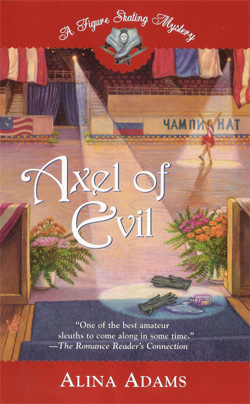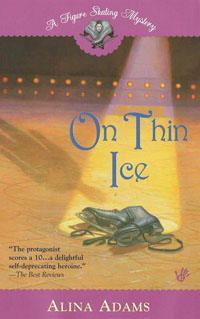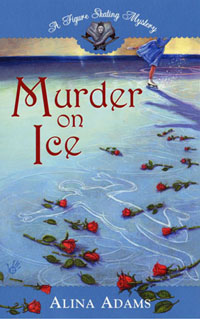LIGHTS, CAMERA, AXEL: HOW TV CHANGED SKATING (PART #1)
In June of 1996, Skating Magazine, the official publication of the United States Figure Skating Association (USFSA), asked their readers to vote on which development had the greatest impact on figure skating in the U.S. in the past 75 years. In last place came the "Harding/Kerrigan" incident of 1994, often cited by those outside of the sport as the turning-point in skating's trans-formation from a once-every-four-years novelty to the second most watched athletic endeavor (after football) in America.
1994 Olympic Silver Medalist Nancy Kerrigan herself, resents such talk, taking offense at the idea that a person being hurt is judged, by some, as "the best thing that ever happened to skating."
And the readers of Skating Magazine agree with her. When asked to name the recent development with the greatest impact on skating, nearly 40% chose "Television."
ABC-TV's director Doug Wilson concurs, "Nothing significant happened in the evolution of figure skating that was not influenced by television. Television not only showed that skating was a sport that had extraordinary requirements, but that it was star-oriented, (with) dedicated, terrific, interesting people. Because in order to be very good in figure skating, you have to be an extraordinary person. The moment a skater steps on the ice, their best friend is TV. We're there to enhance what the skater is trying to say."
For Wilson, that vital process of enhancement is rooted in a strategy he first conceived while watching 1968 Olympic champion Peggy Fleming drawing a diagram of her Olympic program. She was only planning to send it as a Christmas card. But, Wilson realized he could employ a similar diagram to plan out his coverage of each skater's routine in advance. He began inviting skaters to draw him their programs as their music played, and made notes on the timing of their elements.
Unfortunately, Wilson found that what he often ended up with, was a stack of scribbles. When directing Pro Skates in 1983, a lack of time to sit with every skater and review their program compelled him to ask his assistant to monitor the clock and take notes while Wilson watched the rehearsal, and called out his camera-cues on the fly. This improvisation developed into the two-person system Wilson, and every other skating director, uses today.
For him, it's a labor of love. His motto is, "The moment a director is about to display to the person in their living room a Triple Axel that Todd Eldredge has rehearsed 40,000 times for that moment -- then, by God, that's worth attention, it's worth caring, and the value of that better be respected."
But, television doesn't merely observe and record skating. As asserted by the readers of Skating Magazine, television's presence has actually caused a series of revolutions in the sport.
(TO BE CONTINUED MONDAY, NOVEMBER 28, 2005)
1994 Olympic Silver Medalist Nancy Kerrigan herself, resents such talk, taking offense at the idea that a person being hurt is judged, by some, as "the best thing that ever happened to skating."
And the readers of Skating Magazine agree with her. When asked to name the recent development with the greatest impact on skating, nearly 40% chose "Television."
ABC-TV's director Doug Wilson concurs, "Nothing significant happened in the evolution of figure skating that was not influenced by television. Television not only showed that skating was a sport that had extraordinary requirements, but that it was star-oriented, (with) dedicated, terrific, interesting people. Because in order to be very good in figure skating, you have to be an extraordinary person. The moment a skater steps on the ice, their best friend is TV. We're there to enhance what the skater is trying to say."
For Wilson, that vital process of enhancement is rooted in a strategy he first conceived while watching 1968 Olympic champion Peggy Fleming drawing a diagram of her Olympic program. She was only planning to send it as a Christmas card. But, Wilson realized he could employ a similar diagram to plan out his coverage of each skater's routine in advance. He began inviting skaters to draw him their programs as their music played, and made notes on the timing of their elements.
Unfortunately, Wilson found that what he often ended up with, was a stack of scribbles. When directing Pro Skates in 1983, a lack of time to sit with every skater and review their program compelled him to ask his assistant to monitor the clock and take notes while Wilson watched the rehearsal, and called out his camera-cues on the fly. This improvisation developed into the two-person system Wilson, and every other skating director, uses today.
For him, it's a labor of love. His motto is, "The moment a director is about to display to the person in their living room a Triple Axel that Todd Eldredge has rehearsed 40,000 times for that moment -- then, by God, that's worth attention, it's worth caring, and the value of that better be respected."
But, television doesn't merely observe and record skating. As asserted by the readers of Skating Magazine, television's presence has actually caused a series of revolutions in the sport.
(TO BE CONTINUED MONDAY, NOVEMBER 28, 2005)






0 Comments:
Post a Comment
Links to this post:
Create a Link
<< Home